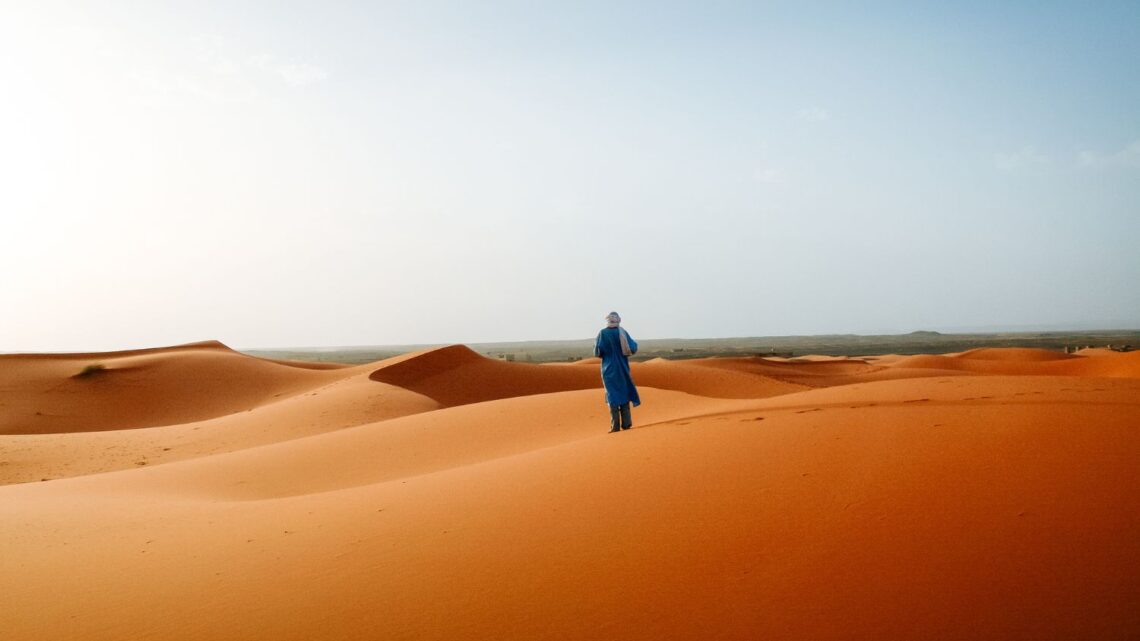
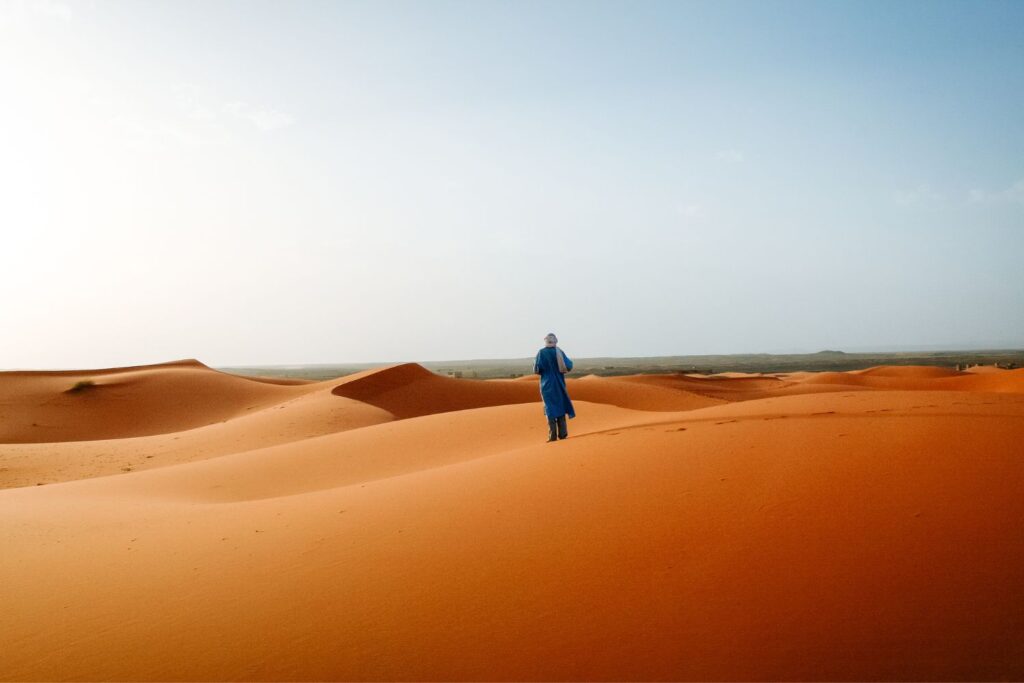
Introduction:
Morocco clothing. Moroccan clothing represents a rich tapestry of tradition, history, and cultural influences. From the vibrant colors of the textiles to the intricate embroidery, each garment tells a story of craftsmanship and heritage. Let’s delve into the diverse world of Moroccan clothing and explore its significance in Moroccan culture.
Traditional Attire:
Moroccan traditional attire varies across regions and social contexts, but several key elements are ubiquitous. One of the most iconic garments for men is the djellaba, a long, loose-fitting robe with a pointed hood, typically worn for everyday occasions. Women often wear the kaftan, a long, flowing robe with ornate embroidery, embellishments, and intricate patterns, especially for formal events and celebrations.
Fabrics and Textiles:
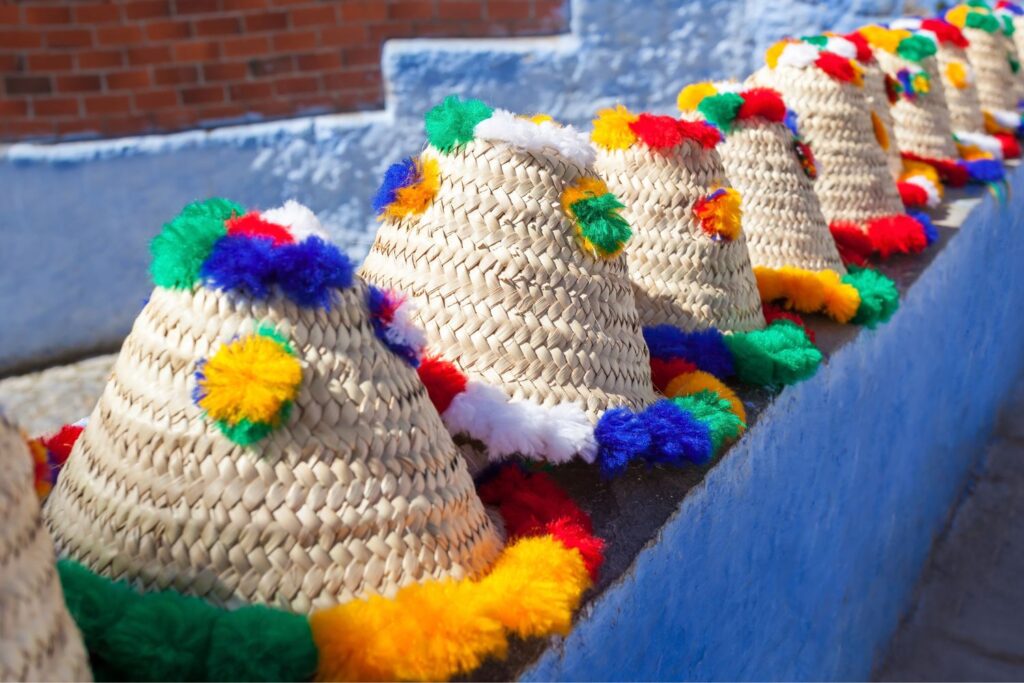
Fabrics play a vital role in Morocco clothing, with each region known for its unique textiles and weaving techniques. Common fabrics include cotton, silk, wool, and linen, with intricate patterns woven into the fabric or added through embroidery. Traditional Moroccan textiles, such as the brightly colored Berber carpets and intricately woven fabrics from Fes and Marrakech, are highly prized for their beauty and craftsmanship.
Colors and Symbolism:
Colors hold significant symbolism in Morocco clothing, with each hue representing different meanings and emotions. For example, blue is associated with spirituality and protection, while green symbolizes nature and fertility. Bright, vibrant colors are often favored, reflecting the lively spirit of Moroccan culture, while intricate patterns and motifs add depth and meaning to the garments.
Modern Influences:
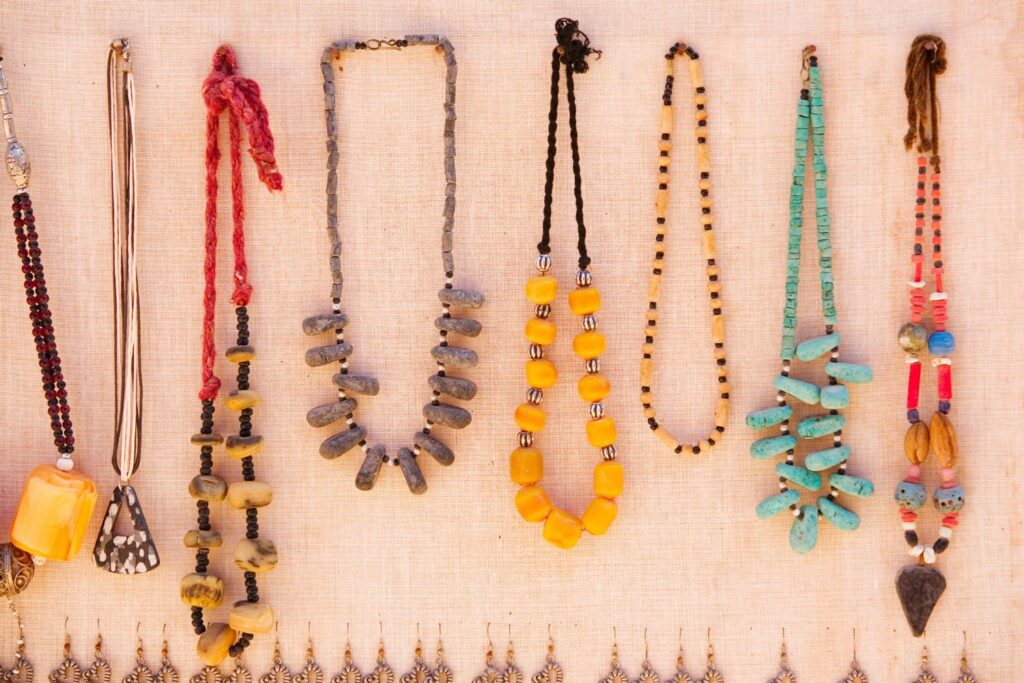
While traditional clothing remains an integral part of Moroccan culture, modern influences have also shaped contemporary fashion trends. Urban centers like Casablanca and Marrakech are hubs of creativity and innovation, blending traditional elements with modern designs to create unique and stylish ensembles. Younger generations often mix traditional garments with Western fashion, creating a fusion of cultures and styles.
Accessories:
Accessories play a crucial role in Moroccan fashion, adding flair and personality to outfits. Women often adorn themselves with intricate jewelry, such as silver bracelets, earrings, and necklaces, often embellished with semi-precious stones and intricate filigree work. Men may wear accessories like the fez, a traditional brimless hat, or the shesh, a turban-like headscarf, adding a touch of elegance to their attire.
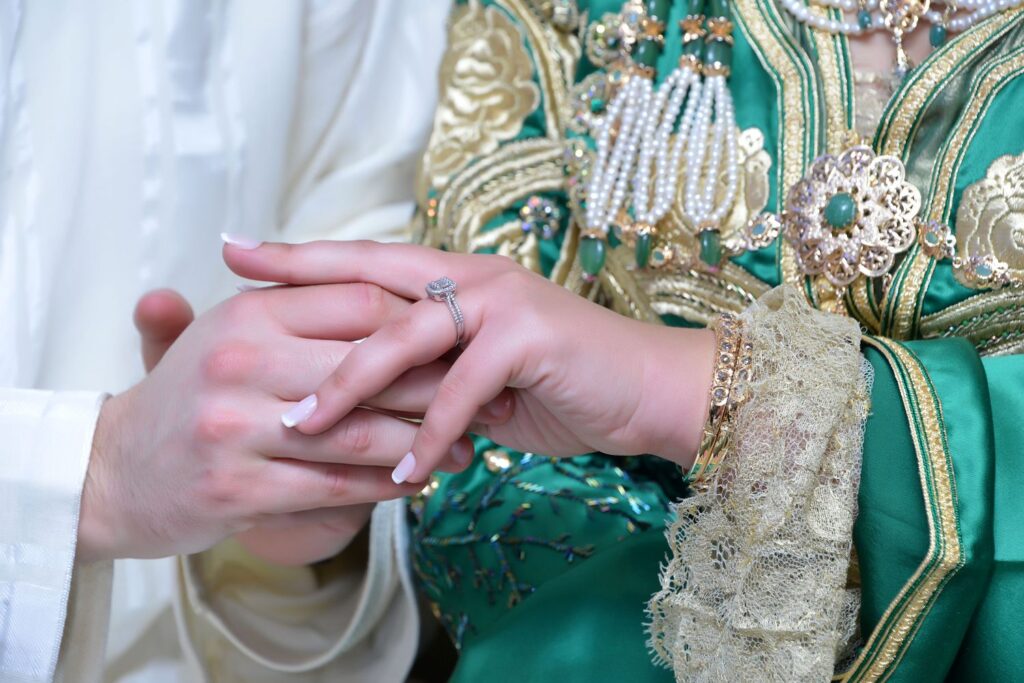
Here are some names of traditional Moroccan accessories:
- Tarbouch (Fez): A brimless, conical-shaped hat traditionally worn by men, often made of felt and adorned with a tassel.
- Babouche: Traditional Moroccan slippers made of leather, often embellished with intricate embroidery or decorative motifs.
- Haik: A large rectangular shawl or cloak worn by Moroccan women, often draped over the head or shoulders for modesty or protection from the sun.
- Fibula (Tizerzai): Ornamental brooches used to fasten traditional Moroccan clothing, typically made of silver or other metals and adorned with intricate designs.
- Hamsa: A palm-shaped amulet or charm believed to bring good luck and ward off evil, often worn as jewelry or displayed in homes.
- Khamsa (Hand of Fatima): Similar to the hamsa, this symbol is associated with protection and is often worn as jewelry or displayed as an ornament.
- Tasbih: A string of prayer beads used by Muslims for counting repetitive prayers, typically made of beads or stones such as amber, coral, or wood.
These are just a few examples of traditional Moroccan accessories, each with its own unique significance in Moroccan culture and fashion.
Morocco clothing :
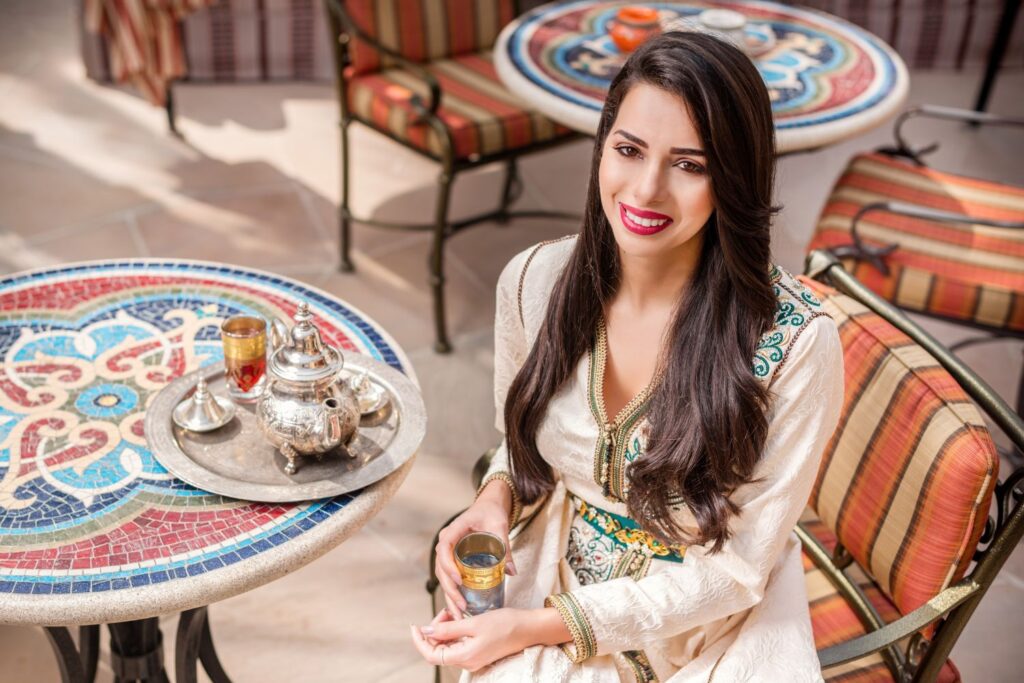
- Djellaba: A long, loose-fitting robe with a hood, worn by both men and women for everyday occasions.
- Kaftan: A long, flowing robe with ornate embroidery and embellishments, typically worn by women for formal events and celebrations.
- Jebba: A traditional outer garment worn by men, usually made of wool and featuring intricate embroidery.
- Takchita: A formal attire worn by Moroccan women, consisting of a two-piece garment with a dress worn underneath and a caftan-like overdress.
- Gandora: A casual, loose-fitting garment similar to the djellaba, often worn by both men and women for relaxation or informal occasions.
- Burnous: A hooded cloak traditionally worn by Berber men, often made of wool and used for protection against the elements.
These are just a few examples of traditional Moroccan clothing, each with its own unique style, purpose, and cultural significance.
Conclusion:
Moroccan clothing is more than just fabric and thread; it is a reflection of Morocco’s rich cultural heritage and identity. From the traditional attire worn for special occasions to the modern interpretations seen on the streets of bustling cities, Moroccan clothing embodies elegance, tradition, and individuality. By exploring the diverse world of Moroccan fashion, we gain a deeper appreciation for the craftsmanship, creativity, and cultural significance woven into every garment. Much like the intricate embroidery and vibrant patterns adorning Moroccan clothing, Moroccan cuisine delights with a rich tapestry of flavors and spices, weaving together tradition and innovation on the culinary canvas.